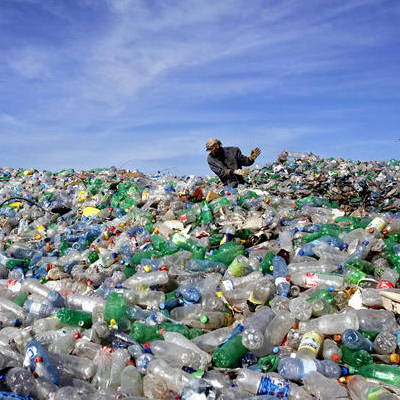Technologies That Can Reduce Plastic Waste

Leave the superior qualities lightweight and easy-to-use for plastic as its birth is unimaginable without those, but whom to blame on when this swiftly-shape-changing marathon participant plastic is reinforcing the global total wastage with around 10% of its contribution, turning the Pacific Ocean as a home for the plastic debris, accounting for 90% of the trash from ocean's surface and boasting as the future reason for the extinction of sea creatures - based on the bitter truth 100,000 marine mammals and 1 million sea birds annual death.
Over 500 billion pounds of plastic is popping out every year, among which 33% is going for single usage and thrown away. Only 8% of plastic is recycled in the U.S., which is comparatively less than the Western Europe that is recycling 15%.
Some Serious Facts about Plastic
- For plastic to degrade, it takes 500-1000 years.
- Americans annually throw away nearly 35 billion plastic water bottles.
- The production of plastic in the last decade is more than the last century.
- Only 5% of plastic is recovering from the total production.
- Nearly 500 billion plastic bags are used worldwide annually. Every minute is witnessing the usage of more than one million bags.
In order to ground the dire problems surfaced by plastic, scientists and researchers are striving to bring up the technologies that can deteriorate plastic waste. Following are some technologies curbing plastic waste.
Technologies That Can Reduce Plastic Waste
Plastic Waste for 3D Printer Filament
A crew from Michigan Technology University (MTU), led by a professor of materials, Joshua Pearce incurred the change of using plastic waste through converting plastic waste as a filament for plastic 3D printer. Compared to the plastic recycling method, the process of turning plastic waste into a printer's filament consumed energy three times less than the recycling, based on the results. The power consumption (saved nearly 70 to 80%) difference is bigger in the smaller towns as the recycling process involves transportation of collected plastics followed by recycling and manufacturing of products.
Plastic Fuel
The concept of fuel formation from the plastic has been trending due the perks wrapped, the process is not limited to the production of fuel but it is immensely solving the plastic waste problem.
Collected plastic waste is shredded and then poured into an oxygen-free chamber that is set to 400 degrees Celsius. Plastic starts melting and entails gas and fuel which are separated in the distilled and filtered stages. The fuel type and its quality varies relying on the type of plastic used. Pure hydrocarbons like polyethylene (PE) and polypropylene (PP) gives a fuel that burns without complications. Usage of PVC generates large levels of chlorine and pollutes environment in contrary to PETE, which produces oxygen and aids to the environment.
Plastic Waste as Road Construction Material
This process comprises of four major steps; Segregation, Cleaning, Shredding and Collection.
Plastic waste with the maximum thickness of 60 microns is collected and then cleaned followed by drying. Dried waste is shredded and added to the heated aggregate in the equal amounts. Right off the bat hot Bitumen has to be added to the plastic and aggregate mixture to use on the road.
Image Source: www.bioenergyconsult.com


